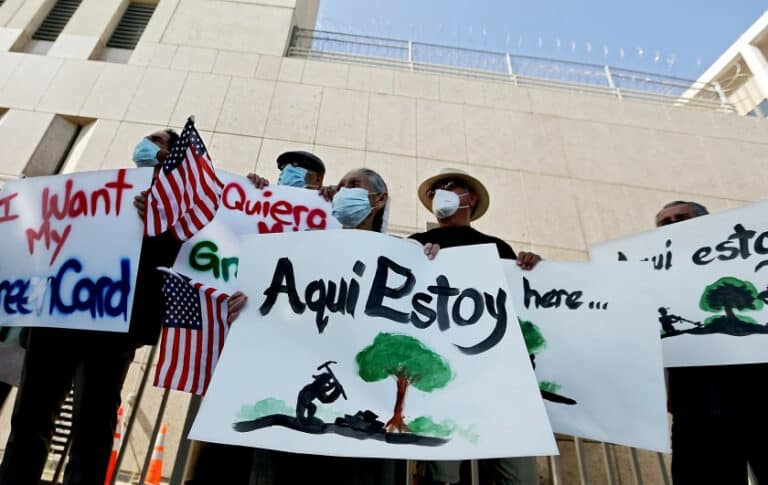Speaking last week at the annual meeting of the Clinton Global Initiative, Hillary Clinton discussed what needs to be done to close the persistent gender gap in American business and society. Among the measures she emphasized was the provision of paid family leave for new mothers, arguing that “[t]he absence of paid leave is a strong signal to women and particularly mothers that the society and our economy don’t value being a mother.” The importance of paid family leave has become a regular talking point for Clinton, Senator Kirsten Gillibrand, Secretary of Labor Thomas Perez, and many other prominent figures in American politics. Attention to this issue is long overdue, as the U.S. lags far behind the rest of the world in implementing paid family leave. A report released this year by the International Labor Organization found that the U.S. is one of only two countries—along with Papua New Guinea—out of 185 countries surveyed that require no paid maternity leave whatsoever.
This post provides background on the issue of paid family leave both in the U.S. and abroad.
Family Leave in the U.S.
While federal law does not provide for paid family leave, it does provide some protections for new parents. The Family Medical Leave Act (FMLA) allows for either parent to take up to twelve weeks of unpaid leave to care for a newborn or newly adopted child. However, groups such as the National Partnership for Women & Families have argued that this framework is inadequate; because small companies are exempted and employees have to work a certain number of hours to earn coverage, over half of American workers are not protected. Perhaps more importantly, many of those who are covered simply can’t afford to take time off with no pay.
A few states have passed their own paid family leave laws. Since 2004, California has provided for six weeks of paid leave at 55% of the worker’s typical pay. In 2008, New Jersey enacted a similar law. Most recently, Rhode Island enacted a law that took effect this year that provides for four weeks of paid leave, increasing to eight weeks by 2015, at 67% of typical pay. All three programs are funded entirely by employee contributions—for example, in New Jersey, employees contribute 0.1% of their base pay. Similarly, in Rhode Island, the program costs a worker making $43,000 per year just 83 cents each week. Meanwhile, Washington State enacted a paid family leave law in 2007, but it has never been implemented.
In the absence of legislation, some private employers, particularly in the technology sector, have provided paid family leave for their employees. Facebook, for example, provides 17 weeks of paid leave to new parents of either gender. Google, on the other hand, provides 18 weeks to new mothers, but only 7 weeks to new fathers.
But despite state laws and private benefits, the vast majority of American workers have no access to paid family leave. A 2012 report from the Bureau of Labor Statistics found that only 11 percent of workers did have such access.
Family Leave Worldwide
How does the U.S. stack up against the rest of the world in this respect? Compared to the vast majority of industrialized nations, the U.S. falls far short. In the United Kingdom, for example, new mothers are entitled by law to 39 weeks of maternity pay, at 90% of their average weekly earnings for the first six weeks. Brazil, China, France, Germany, India, Indonesia, Mexico South Korea, and Russia all provide for the continuation of 100% pay for periods of time ranging between 12 weeks (India, Indonesia, Mexico) and 20 weeks (Russia). Even countries that are among the poorest in the world such as Afghanistan (12 weeks with pay) and the Democratic Republic of the Congo (14 weeks) mandate paid family leave.
The Debate
Why, then, is the U.S. such an outlier on this issue? One reason has been the implacable opposition of much of the business community. In 2007, a vice president of the U.S. Chamber of Commerce promised “all-out war” from the business community in response to any attempts to impose a federal mandate. And the National Federation of Independent Business has aggressively opposed paid family leave proposals, calling them “job-killing mandate[s]” that “would have a very negative impact on small business.”
Moreover, some economists have recently argued that while some paid family leave is likely beneficial, the generous programs common in European nations may be counterproductive. A recent study of 22 countries found that such programs increase women’s participation in the labor force, but also “encourage part-time work and employment in lower level positions.” Other economists have argued that overly generous paid family leave programs may make employers hesitant to hire women in the first place.
Nonetheless, there is a growing consensus that paid family leave brings significant benefits to women and families without producing adverse economic consequences. Advocates have stressed that paid family leave produces health benefits for newborn children, while protecting the economic security of working families. Meanwhile, a recent study of California’s program found minimal effects on business. A report released this summer by the White House Council of Economic Advisors goes even further, suggesting that paid leave “can have a positive effect on long-term productivity by improving recruitment, retention, and employee motivation.” Even Forbes has argued that “card-carrying capitalists should support paid family leave,” as it ends up being cheaper in the long run.
Going Forward
At the end of last year, Senator Kirsten Gillibrand and Representative Rosa DeLauro introduced the Family and Medical Insurance Leave (FAMILY) Act, which would mandate 12 weeks of paid leave for all employees, financed by small employee and employer contributions. While the Act remains stalled in Congress, polling has indicated strong support for the bill among the public. Given the consistently broad-based support for paid family leave, and its increased visibility in recent months, there may be reason to hope that the U.S. will catch up with the rest of the world before long.






Daily News & Commentary
Start your day with our roundup of the latest labor developments. See all
July 4
The DOL scraps a Biden-era proposed rule to end subminimum wages for disabled workers; millions will lose access to Medicaid and SNAP due to new proof of work requirements; and states step up in the noncompete policy space.
July 3
California compromises with unions on housing; 11th Circuit rules against transgender teacher; Harvard removes hundreds from grad student union.
July 2
Block, Nanda, and Nayak argue that the NLRA is under attack, harming democracy; the EEOC files a motion to dismiss a lawsuit brought by former EEOC Commissioner Jocelyn Samuels; and SEIU Local 1000 strikes an agreement with the State of California to delay the state's return-to-office executive order for state workers.
July 1
In today’s news and commentary, the Department of Labor proposes to roll back minimum wage and overtime protections for home care workers, a federal judge dismissed a lawsuit by public defenders over a union’s Gaza statements, and Philadelphia’s largest municipal union is on strike for first time in nearly 40 years. On Monday, the U.S. […]
June 30
Antidiscrimination scholars question McDonnell Douglas, George Washington University Hospital bargained in bad faith, and NY regulators defend LPA dispensary law.
June 29
In today’s news and commentary, Trump v. CASA restricts nationwide injunctions, a preliminary injunction continues to stop DOL from shutting down Job Corps, and the minimum wage is set to rise in multiple cities and states. On Friday, the Supreme Court held in Trump v. CASA that universal injunctions “likely exceed the equitable authority that […]